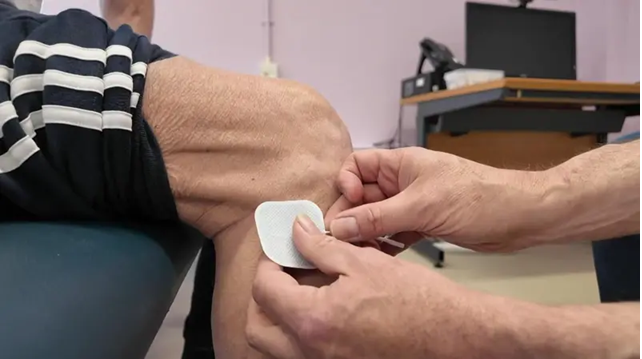Parkinson’s progresses at different stages for everyone. In the advanced stages, some people may become bedbound.
Whether you are confined to bed due to Parkinson’s, an injury, or surgery you risk losing muscle mass and strength. Your muscles will also shorten and tighten whilst in bed which will cause muscle cramps and pain.
However, there are several exercises you can do whilst in bed to help maintain your strength and flexibility.
Palm Stretches
Palm stretches help maintain hand function, whether it’s for reading books or engaging in your favourite hobbies while bedbound. This exercise can also prevent hand stiffness and pain. Stretch each hand out as far as possible and then make a fist and squeeze the fingers to the palms.
Arm Lifts
When confined to bed for long periods your muscles become restless. Lift your arms off the mattress and hold them there for 10 seconds. This will strength the arms and shoulders and increase blood flow which helps circulation and prevents cramping. If possible, hold the position for 10 seconds.
Shoulder Shrugs and Rolls
To exercise your shoulder, back and neck muscles try doing shoulder shrugs and rolls. Lift your shoulders as high as you can, hold a few seconds then pull down and hold a few seconds. Repeat around 10. These areas can get very stiff when your constantly in bed. This will make movement easier and less painful.
Leg Lifts
Lifting your legs works your core muscles, including the abs, obliques, and lower back. These muscles can help you to sit up in bed or swing sideways to stand when necessary. Keep the knees bent to lessen the load on the abdominal muscles. If possible, hold the position for 10 seconds.
Bridging
Lie on your back, bend both knees facing upwards. Lift the hips up and hold the position for 3 sec, slowly lower your hips back down. Repeat 6 to 8 times.
Core
Bend both knees and tighten your lower stomach below the belly button. Hold this position and lift one leg upwards direction and slowly lower it down. Repeat the same with the other side. This procedure can be done 7 or 8 times for each leg. Working on the core part of the body protects the back and keeps it stable while turning in bed or getting up from the bed.
Flex and Point
Lying on your back, point the right foot while flexing the left foot at the same time.
Alternate this slowly around 10 times. Then flex your both feet to sense the stretch on your legs and calf muscles.
Side Leg Lift
Resting on your back with flexed feet slightly apart. Place your hands under your bottom for support and stability. Lift the legs slightly and take them wide apart, to make a Y shape. Hold this position for 2 to 3 seconds and then bring them down slowly. This exercise will help to strengthen your leg and hip muscles. Repeating this will improve lower back pain.
Hamstrings
Lay back on your back so that you can be in a comfortable position and then you bend one leg and press the ankle of the bent leg into the mattress. Hold the position for 5 seconds and then relax. Follow the same process with the other leg. This will help your leg muscles to become strong.
Pelvic Tilt
Lie on your back with your legs bent. Gently pull your stomach in and push your back flat into the mattress. Hold for 5 seconds then relax. Repeat for 6 to 8 times. It’s an easy exercise to do in bed and strengthens the core, reduces back pain, and help with sitting.
Glutes
Keep your feet flat on the mattress and tighten your bottom muscles. Hold for 5 seconds, then relax. This will also strengthen your bottom and core muscles.
Staying in bed for long periods put you at a high risk of pressure sores, poor blood circulation, bone density loss, pain, reduced joint movement, depression, and incontinence.
However, there are plenty of exercise options even if your mobility is limited. Try these exercises to help prevent other health problems associated with spending too much time in bed.
Before starting any exercise regime, make sure you consult with your doctor first.
References:
https://thegeriatricdietitian.com/bed-exercises-for-elderly/
https://www.ncbi.nlm.nih.gov/pmc/articles/PMC6304477/
https://www.pensionsweek.com/blog/bed-exercises-for-elderly/









